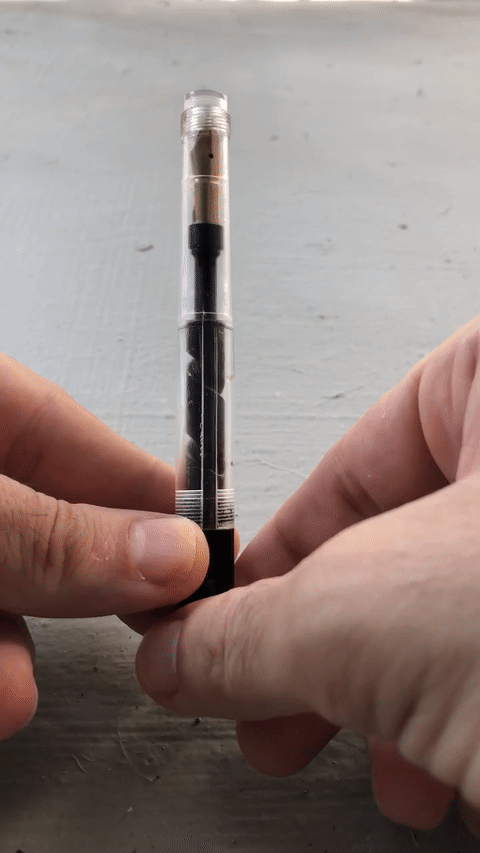Octagonal No. 4 Solid Gold Overlay Safety

This Montblanc No. 4 safety filler pen was made between 1923-25. Safety fillers, in general, are sought after by collectors but this pen is extra special! It has an overlay made of solid gold - notice the 585 hallmark on its cap. Precious metal overlays were made for Montblanc pens by a few experts in Germany including Maenner, Fend, and Sarastro. Overlay work was also done in Italy for a few series of Montblanc - the pens were manufactured in Germany and sent to Italy for overlay work, and mostly sold in Italy too. These were typically made in rolled gold (a form of plating - in layperson's terms) and hallmarked as "18 KR". Here is an example of an Italian overlay safety (link). However, the pen featured in this article is distinctly German in its barley overlay design and made by Sarastro from Pforzheim, as attested by the "S" imprint in the cap.

The octagonal shape of the pen gives it a distinct character from the more common cylindrical rounded pens. The shape was advertised in 1920s catalogues as being available in "Achtkantform; for those looking for a particularly elegant and shapely pen".

Many variations are found in these overlay safeties. Some have overlay work all over - leaving no black hard rubber parts exposed (like the pen here -> link). Others have some of the black portions exposed - like the pen featured in this article. Personally, I like the contrast between the BHR section/cap top/turning knob and the gold barrel and cap.


The nib on this pen is the correct size 4 made of 14c gold. It draws an extra-fine line, as suggested also by the "EF" imprint on the turning knob. The nib is period correct and belongs to safety pens that were made in the early-mid 1920s.


MB's safety pens have a pin inside the cap which ensures that if the user forgets to screw back the nib into the barrel before capping the pen then it will push the nib in first - preventing any damage that might otherwise have been caused to it by being pushed against the inner top of the cap. This function is explained in an old 1936 catalogue.
For bibliography, see Resources page -->link
Safety fillers are a wonderfully intelligent filling system if you ask me! The nib unit rests inside the barrel when the pen is capped. After uncapping, a turning knob at the bottom of the barrel forces the inner shaft holding the feed and nib to extend and expose the nib from the section of the barrel. As it extends, the nib unit locks its collar against the section so that no ink can flow out of the barrel. This made it "safe" from ink leaks. And, because of the fact that the nib unit is always submerged in ink, this pen was advertised as never suffering from hard starts!
The video here shows the workings of a Montblanc safety mechanism from a tier-3 pen made in the 1930s. The barrel was custom made for me by Francis Goossens, and it allows us to see exactly how the helix rod and nib unit engage with each other and create a seal with the section when extended, also allowing us to visualize how the nib unit sits in ink and is thereby primed at all times and ready for writing.
